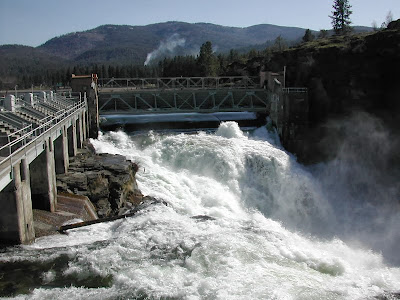Whenever has a starting, it must have an ending. The same apply to this RPK 539 subject. After attending 15 consecutive weeks without failed, there are a lot of things that may change my life in the future that I had learned. The most important part is of course the sustainability issues which is not only about the protecting the environment as I had thought earlier.
In the class I had learned that sustainability comprise 3 main aspects which is people, economic and environment. Then there are some others aspect that is exist between each of the aspect such as cultural, quality of life, built environment, energy/sources and also language. Language? Yes, based on my own readings, I found that the languages also are one of the sustainable aspects of the people that should be maintained for the future.
For example, my own Malay language is being used by about 250 million of people in the Nusantara region, mainly in Malaysia, Indonesia, Brunei, Singapore and some part of Thailand and Philippines. It is interesting to see this language to become one of the next major world language like the English, Spanish, Mandarin and Arabic. Even though the Government had initiates many actions to make the language sustain in the future, yet I still cannot understand why in some university or college the subject is taught in English. (sorry no offence here. =)).
 |
| Will it ever happen in the future? |
Next, based on the subject taught by Dr Nurwati and the others, I had learned what are the current issues regarding sustainable framework. For example, the exploding of the urban population all over the world which no one could imagine it would threat the world resources badly. For example, in the Malaysia context; it is expected by the year 2020, about 75% of population will be live in the urban. As we all know, the urban consume what are the rural people produce. Now, what can we expect in the year 2020 if the 25% of the Malaysian population are being forced to work hardly just to feed the urban dweller? No one want imagine that. And nobody wants to become a slave for the people who think they are better than one another!
 |
| Not and never happen in Malaysia please.. =) |
 |
| Rural is never destined to be consumed by the urban! |
The next issue that is interested for me is the creative city as the next economic sources for Malaysia. We had discussed it earlier and I think that the creative industry in Malaysia should provide a better infrastructure and initiatives from the Government for the players in the industry. For an example video gaming. It is another creative industry aspect that can be introduced in Malaysia as the global gaming market nowadays exceeds 90 billion USD in sales per year. The gaming industry include the gaming designing which of course requires a lot of money. Generally (in my own readings), to design a game it would requires a publisher to invest around 20-30 million USD which involving the programming, designing, motion capture (just like movies) and publishing and marketing.
The return however would be surprisingly higher based on the popularity and quality of the game. For example, the much controversy game, Grand Theft Auto V broke 1 billion USD in sales in just 3 days on the market and has broke the record as the fastest selling entertainment product in the world. In the context of Malaysia, we already have our own Multimedia Super Corridor (MSC) which supervises all the multimedia related industry in Malaysia. By providing better infrastructure such as studios, lower taxes and publishing right, it is possible that many famous gaming studios in the world would set up here like Sony, Microsoft and Nintendo, just like in Singapore. We also have our own talents in various sources such as Lim Kok Wing University, Multimedia University and many other private college that serve as the large nucleus for the gaming industry in Malaysia.
 |
| Game designing as the creative industry in Malaysia? |
And lastly, the most important thing that I had learned is that anything we do in this world, it would be affect the life of the future generation. There is a quotes from my Geographic subject during Form 6: ‘even if u meditate alone in the cave, you will still interrupt the jungle” which in Malay as: “kalau kita bertapa dalam gua pun, kita mesti akan rosakkan tumbuhan-tumbuhan sekitar”. I still stand on this principle when it comes to planning and developing process. Like it or not, any development must have an impact to the environment; big or small. But what are most important is whether the development bring a better benefits for the people or not? If we just simply protecting the trees then, our people are starving without food then we must cut down the trees, clean the forest and make a good use of it (agriculture?). now that is what I call as the sustainability of mind. How we keep evolve our mind when it comes to new challenge, environment and times. I think that is enough for now. Thank you for spend your precious time reading my blog. =)
 |
| Me and my friends in Matang Mangrove Conservation Centre. =) |





























